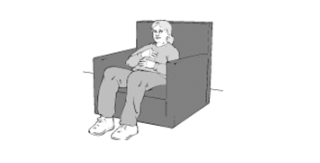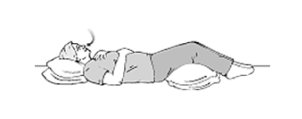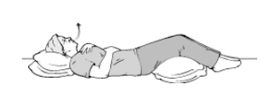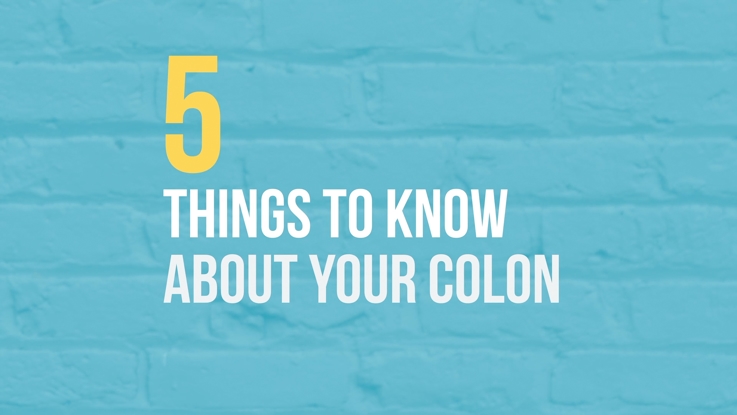Turn Stress to Relaxation
- Category: Living Well
- Posted On:
- Written By: Robert Gardner, Ph.D., LPC
Turning Stress to Relaxation through Deep Breathing
Stress is a natural part of life and cannot be avoided. Stressful events happen all the time. However, intense or chronic stress can be extremely detrimental to your health. A general rule for psychological stress: how you perceive an event—how you view it and then handle it—will determine how much stress you experience. As a result, you experience stress in your own way.
Given that you will likely feel some level of stress each day, it is important to focus on finding ways to relax. Relaxation promotes good health by giving the body and mind time to rest and recover. Further, relaxation practices can help with pain management, elevate mood, reduce fatigue, and improve sleep.
There are various techniques you can use to better manage stress and promote relaxation. One of the simplest and most effective ways to promote relaxation is through deep breathing.
Deep Breathing
Breathing is something that we take for granted and all believe we do correctly. However, most people tend to breathe by expanding their chest and restrict movement of their abdomen. This way of breathing actually limits the amount of air you can inhale and, as a result, is not stress relieving.
Deep breathing is accomplished by expanding the stomach thereby enabling the diaphragm—the muscle under the rib cage—to move freely. This allows the lungs to fully expand enabling them to take in more air. When done in a slow and rhythmic manner, deep breathing promotes relaxation and reduces stress.
The proper way to engage in deep breathing is:
- Lie down in bed or on a comfortable couch or recliner with your knees slightly bent and your head properly supported
- Sit in a comfortable chair with your feet flat on the floor.

- Place one hand on your chest and one hand on your abdomen/belly so you can feel your breath move your hand
- Relax your shoulders and maintain a natural spine position that allows the curves of your spine to be present
- Concentrate on your breathing by focusing on the hand on your belly
- Begin to inhale through your nose, slowly draw your breath into your abdomen—you should see your belly slowly expand as you inhale while your chest remains as still as possible

- Inhale as much air as you comfortably can hold
- Slowly exhale through your mouth/pursed lips in a slow, rhythmic pattern that is approximately twice as long as your inhale

- Exhale as much air as you comfortably can
- Repeat this same process with each breath for 5 minutes (at a rate of 10 – 12 breaths per minute) focusing on maintaining a slow, rhythmic breathing pattern throughout
REMEMBER the following about breathing:
- Stressful feelings leads to tense, shallow breathing
- Calm is associated with relaxed, deep breathing
- Turn tension into relaxation by changing the way you breathe
60-Second Break
When you begin feeling stress, take a one-minute break using the following technique:
- You become aware that you’re feeling stress and recognize you need a quick break
- Remove yourself from the stressful situation—if necessary—finding a quiet, comfortable place
- Sit down in as comfortable of a chair as you can find
- Practice deep breathing (follow the guidelines in the section on Deep Breathing) by taking slow, rhythmic breaths
- Repeat to yourself with each inhale, “alert mind” and with each exhale “calm body”
- After one minute notice the difference in how you feel—do you feel less stress present and if not, give yourself another 60-second break … you deserve it!
Visualization
Another useful technique that promotes relaxation is visualization. Visualization is a process that uses the mind to recreate and enjoy a relaxing experience, situation or environment. This involves imaging yourself in a pleasant or calming location, such as a favorite vacation spot, or with a person you enjoy being with. Visualization is similar to daydreaming except it is focused and intentional. The practice of visualization is limited only to your imagination.
To experience visualization to the fullest, you should try to use all your senses. For example, if you visualize being at the beach, hear the sound of the waves, the smell of the ocean, the warmth of the sun, the breeze on your skin, the taste of a cool drink, and so on. Incorporating all your senses makes the visual image seem more real and intensifies your relaxation response.
You can also combine visualization with deep breathing to further promote relaxation. As you practice deep breathing, use calming mental images to relax even more. Imagine that each breath has a calming effect as it goes throughout your body. For example, on a hot, sunny day, visualize taking cool, refreshing breaths.
For More Information
The following books provide more information to help you better manage stress through breathing practices.
- Conscious Breathing by Gay Hendricks, PhD
- Breath into Being by Dennis Lewis
- The Healing Power of the Breath by Richard Brown, MD
- Breath Well, Be Well by Robert L. Fried
- Natural Breathing by Dennis Lewis
- Full Catastrophe Living: Using the Wisdom of Your Body and Mind to Face Stress, Pain, and Illness by Jon Kabat-Zinn
- Five Good Minutes: 100 Morning Practices to Help You Stay Calm and Focused All Day Long by Jeffrey Brantley and Wendy Millstine
Robert Gardner, Ph.D., LPC is Director of Psychosocial Oncology at Touro Infirmary and administers all aspects of Touro’s Supportive Cancer Care Center. Dr. Gardner earned his Ph.D.. from the University of New Orleans in 2008. He completed his Internship at Tulane Cancer Center in 2005, where he also served as Clinical Mental Health Counselor from 2006 – 2008. Dr. Gardner is a Licensed Professional Counselor in the State of Louisiana.
>> Click here for details on Dr. Gardner and the Supportive Cancer Care Center at Touro.


